24 Feb CHAPTER SIX
The physical book has been updated to version 6 but this is the original version of chapter 6.
The most competitive companies of our age are digital companies. And the biggest of these digital/tech companies are being investigated for antitrust because they’re regarded as being so competitive that they’re repressing all their competition. Intrinsically related to this narrative is data. Facebook, Amazon and Google are said to know too much about us, their customers. This isn’t by chance. There is a causal relationship between customer data and competitiveness: the more the company knows about its customers, the more competitive it is. Privacy issues aside, this is what we want for our portfolio companies. Not the antitrust thing—well, maybe the antitrust thing—but what we want more is for our companies to be so competitive that they dominate their markets.
Identifying portfolio companies that are best suited for digital transformation is always the first phase of digital diligence. Ideal candidates are nondigital, nontech companies that are most likely to be traditional, mature companies operating in markets that haven’t been digitally disrupted yet.
Being data driven is the hallmark of all the most valuable and innovative companies today, and in history. Being data driven comes naturally to tech companies that sell digital products that are used online, create value online and predominantly operate online. Why? Because with software, customer data is easily accessible. This has put traditional competitors at a disadvantage. Amazon, Uber and Tesla have inherent competitive advantages over traditional bookstores, taxicab companies and traditional automotive manufacturers, but this hasn’t been lost on these traditional competitors. To various levels of success, they are all transforming themselves into digital-traditional companies so they too can reap the rewards of using customer data as a competitive weapon. This is and will be the same story for all sectors.
Digital transformation is the process of transforming a traditional company into a digital-traditional company. The digital operating partner uses high technology to transform traditional companies into companies that use data to drive initiatives that increase competitiveness. This increased competitiveness helps traditional companies increase sales, expand margins and, in many cases, ratchet up their valuation multiple by taking advantage of the structural changes resulting from the transformation. Put another way, data-driven companies are more valuable companies.
Here we look at the traits that best identify portfolio companies that have the highest potential from being digitally transformed and becoming data driven.
THE COMPETITIVE ADVANTAGES OF BEING DIGITAL
The competitive advantages of being digital, or of being data driven, enable digital-traditional companies to outperform their traditional competitors and, in some cases, to be so competitive that they disrupt their industries. Digital-traditional companies have a comparative advantage over their traditional rivals from using tech and data to increase operating efficiency, which improves their margins. Perhaps more important though, digital-traditional companies can use the customer data they collect to increase their differential advantage over their competitors.
The differential advantage of being data driven results in smart products that are unique and of higher quality than the products of their traditional competitors. Think Amazon versus traditional bookstores, Uber versus traditional cab companies, Tesla versus traditional automotive manufacturers and you get the picture. When done properly, smart products are better products as measured by usability, functionality and performance, and by almost every other metric, because they know what their customers need. Data-driven companies have a full-time window into their customers’ worlds, and if the companies look, they can see how their customers use their products and what the customers use their products for. This leads to more innovative products that increase sales by earning more market share, and it leads to new products that increase sales by expanding market share (Figure 6.1).
Knowing how your customers make money, and how much money they make from using your product, leads to more rational pricing and to inventing new business models. New business models can lead to the hypercompetitiveness that dominates and even disrupts industries. Of course this is not guaranteed, but interfacing your business model to your customer’s reduces monetization friction and in the process can have wide-ranging effects such as disintermediating the vulnerable, shifting the boundaries of competitiveness and subsuming conventional product categories, along with other novel and potentially disruptive strategies.
Because of the unique skills and company conditions necessary to create smart products, there is a high barrier to entry. And even if the digital functionality is duplicated, competitors can’t duplicate the amount of data that was captured in the meantime. It is important to be first. Where a traditional product’s value is in its physicality, the value of a smart product is derived not only from its physical capabilities but even more so from its software and data capabilities.
•••
The book’s original 8 chapters are freely available on this site if you register with the form below checking “Send book’s intro chapter & book password and add me to your mailing list!” After registering we’ll email you the book password to access all the chapters.
When you have the book password click here to continue reading this chapter.
However, if you would like the full book, updated, formatted and bound, you can








